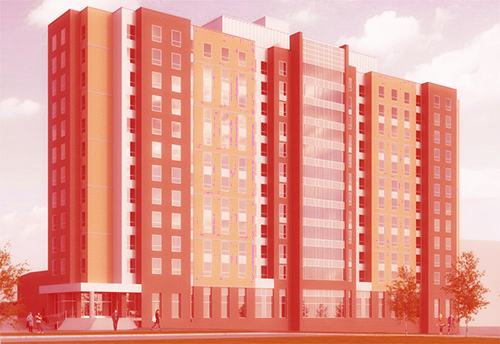
The bright red buildings and skies of the University of Fireloo.
The University of Fireloo is about to build a new on-campus residence named University of Fireloo Place (UFP), a village with  apartment buildings!
apartment buildings!
Apparently, UFP's architects are quite superstitious, so they believe that the  distinct numbers
distinct numbers  are "unlucky". As a result, for the
are "unlucky". As a result, for the  apartment building, they want the floors to be numbered from
apartment building, they want the floors to be numbered from  to
to  inclusive, but removing all floors with unlucky floor numbers.
inclusive, but removing all floors with unlucky floor numbers.
Now, the architects need your help to determine how many floors each apartment in UFP should really have.
Constraints






For 20% of the points,  , and
, and  for all
for all  and
and  .
.
For an additional 30% of the points,  , and
, and  for all
for all  and
and  .
.
Input Specification
The first line contains  , the number of unlucky numbers the architects have considered.
, the number of unlucky numbers the architects have considered.
The second line contains distinct, space-separated positive integers  , the unlucky numbers.
, the unlucky numbers.
The third line contains  , the number of apartments to be built in UFP.
, the number of apartments to be built in UFP.
For the next  lines, the
lines, the  line contains
line contains  , the top floor number of the
, the top floor number of the  apartment. It is guaranteed that no top floor number is an unlucky number.
apartment. It is guaranteed that no top floor number is an unlucky number.
Output Specification
Output  lines, where the
lines, where the  line contains one integer denoting the actual number of floors the
line contains one integer denoting the actual number of floors the  apartment should have.
apartment should have.
Sample Input
Copy
2
4 13
2
16
14
Sample Output
Copy
14
12

Comments
Someone please tell me what I can do to make my code run faster :v
You need to change your approach to the question since your current time complexity is too large. You can read the editorial for a hint.